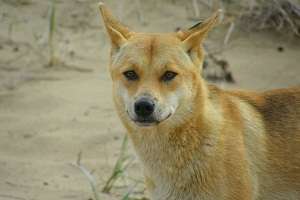Dingo parasite causes concern for indigenous communities

Researchers have warned that indigenous communities could be at risk of infection after they discovered the first report of a particular parasite in dingoes in far north Queensland.
The hookworm, Ancylostoma ceylanicum, is common in dogs, cats and humans throughout Asia and to date has only been found in domestic dogs in Australia.
Scientists from Western Australia and Queensland have recently published findings that suggest A. ceylanicum has the ability to cause infection that could lead to iron-deficient anaemia, with communities in wet, tropical climates at high risk.
James Cook University lead researcher Dr Felicity Smout says awareness needs to be raised in indigenous communities, where dingoes are known to roam.
"Due to the zoonotic potential of this parasite we hope to raise awareness in the public health sector, especially in indigenous communities," she says.
"These communities may be at particular risk due to limited management of domestic dog health and the presence of free–roaming community dogs that can be exposed to parasite eggs and larvae in soil contaminated by wild dogs."
Dr Smout says veterinarians could also benefit from the research to reinforce the importance of regular worming treatments for their pets to ensure the ongoing health of the animal, but also to reduce the risk of infection to the animal's owners.
The research, which took place near Cairns, collected 26 wild dog carcasses killed in council control operations and 89 wild dog scats were collected over a 12-month period between 2010 and 2011.
All specimens were transported to Murdoch University where almost 71 per cent of the wild dog scat was positive for A. ceylanicum.
Specimens from the intestines of the wild dogs carcasses showed a 100 per cent infection for Anclyostoma caninum and three had dual infections with A. ceylanicum.
Research conducted in 2011 found A. ceylanicum was the most neglected of all human hookworm species and coupled with warm, moist conditions provides an ideal scenario for the success of soil–transmitted helminth infections.
According to the World Health Organisation (WHO) soil–transmitted infections are among the most common infections worldwide.
Dr Smout says the full story of how this parasite made its way from Asia to Australia is uncertain, but research suggests that other native animals cannot contract the parasite.
"This parasite has been previously described to naturally occur in domestic dogs and cats, wild felids and humans," she says.
"There is no evidence to suggest that other native Australian animals would be at risk of infection."
Provided by Science Network WA



















